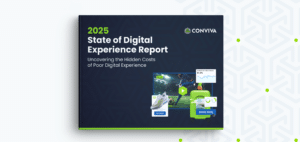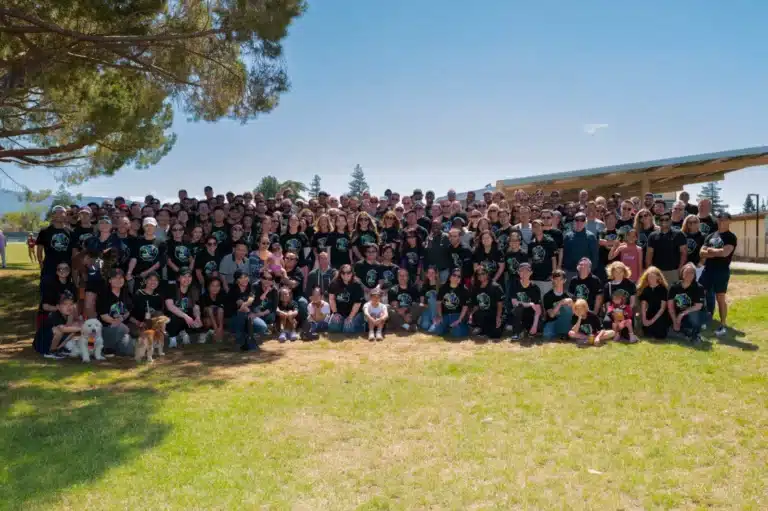While there aren’t many standard definitions of Chief Scientist in enterprise technology, the role undoubtedly carries a responsibility not only to its company, but to the broader scientific and research community. Few people are better suited to this role than Vyas Sekar, Conviva’s new Chief Scientist. While he steps into this role for the first time, Vyas is no stranger to the responsibility, having served the research and scientific communities, and having a long history of collaboration with Conviva.
As the Tan Family Chair Professor of Electrical and Computer Engineering at Carnegie Mellon University, Vyas has authored over 100 scientific papers and is the recipient of many prestigious awards including the SIGCOMM Test of Time Award, Intel Outstanding Research Awards, Google Faculty Research Award, IRFTF Applied Networking Research Prize, and more. Most recently, at the 2023 Conference on Innovative Data Systems Research (CIDR) in Amsterdam. The paper met their high standards for “innovative and risky data management systems architecture ideas and provocative positioning statements.” It was also accepted by CIDR as one of the select few to “inspire discussions on the latest innovative and visionary ideas in the field.”
It was a timely honor for Conviva to present that work at CIDR this week. We sat down with our newest innovator, Vyas Sekar to learn more about his new role as Chief Scientist at Conviva.
Welcome Vyas! Can you share your background and how you first became involved with Conviva?
My research background is in computer networks, computer systems, and computer security; along with deep experience in computer networks, content distribution, and video streaming. I first was introduced to (what was soon to become) Conviva over 10 years ago through two of its founders: my doctorate advisor, and a close mentor of mine. Since then, I’ve collaborated with Conviva and the leading scientists here, including on our Test-of-Time winning paper: Understanding the Impact of Video Quality on Engagement.
Stepping away from academia at a prestigious university affords you many commercial options, so what led you to Conviva?
I’m at an interesting juncture in my career, having been in academia for a while with moderate (chuckles), well, above average, success.
There are some aspects of the industry that we simply don’t get exposure to in academia. I’ve always been interested in the question of how we transition innovative scientific ideas into real-world impact at Internet scale.
And why Conviva?
I was fortunate to consider different options, but what I really want to do is have a real impact on the world and learn how to design and deploy innovative production systems at Internet scale.
Few companies can do things at the Internet scale of data collection and data analysis—and are proven to serve top-tier customers. For example, Conviva recently simultaneously supported over 20 streaming provider customers, serving the largest World Cup audience ever, and has done the same for the Olympics and Super Bowls. These are not trivial events. It requires massive scale and impressive infrastructure to support live streaming events of this magnitude.
At the same time, many companies that operate at this scale have become increasingly more “ossified” over time and are simply not positioned to innovate rapidly and transition new ideas into production systems. In contrast, Conviva has the vision, passion and capability to do both.
Conviva has a unique opportunity to both innovate and deploy at scale that appealed to me. Plus several of their founders also came up through Carnegie Mellon. We share a DNA grounded in the discipline and rigor of scientific research and analysis that I see evident in how the company approaches new problems and operates day-to-day The opportunity to do big things, combined with the incredible people already working here, is why I ultimately landed at Conviva.
After all of those years of knowing and working with Conviva, was there anything that surprised you when you considered joining the company full-time?
Yes. Even though Conviva is a technology company with the capabilities of a Big Data company, I’ve honestly always thought of us as a video streaming company. However, while working on this CIDR paper and collaborating more deeply with the Conviva engineering team and architects, my opinion changed.
It became very apparent that Conviva is really a technology company with the potential for broad applications and impact across industries. They chose to focus first on solving the most challenging and complex problems in streaming video. But the powerful platform the company has built is much bigger than that. This realization, and the opportunity to play a key role in defining that direction and replicate the company’s success in even bigger categories, was a clincher for me.
Can you expand on that, how did that “a-ha” moment inform your role as Chief Scientist?
Conviva operates and thinks like a big data company. Big data companies have horizontal appeal in the market because they are able to deliver the technology needed to drive better decisions across a wide range of industries. They create and build these “Lego blocks” that companies can build to fit their business needs.
What I’ve encountered is that Conviva has already built very cool “Lego blocks” for complexity and scale that nobody else has, ones capable of addressing the massive complexity, scale and speed of the streaming video industry. And nobody else can replicate them, at least not any time in the near future.
The value of that is immense and extensible.
Can you tell us a little more about this CIDR paper you’ve referenced? What is it and why is it a big deal?
CIDR is a conference hosted by the database community that asks the question, what will the next generation of big technology look like? It’s a peer-reviewed conference comprised of experts in the database and Big Data communities, who are thinking about the most impactful paradigm shifts.
What makes it so prestigious is that our papers are peer-reviewed by both leading academics and industry practitioners—those who are facing the same types of fundamental challenges we do and are trying to solve the same problems we’re working on at scale.
It was exciting that our paper,”Raising the Level of Abstraction for Time-State Analytics with the Timeline Framework” was accepted. It reinforces that we are headed in the right direction in terms of addressing a fundamental problem, and have the potential to change the market; e.g., reducing developer effort and cloud costs dramatically for Big Data analysis across many domains.
What’s the most important takeaway from the Time-State Analytics paper that you want people to have?
In the streaming media realm, we identified a new class of data processing problems that we call Time-State Analytics. This class of problems becomes business-critical for stateful, perpetually evolving, context-sensitive metrics that need to be computed and acted on continuously in real-time. These problems are also extremely pervasive beyond video. They exist in every industry and appear in any domain—in fintech, in manufacturing, in IoT, in automotive, and more.
So what’s next for you?
Conviva has solved for time-state analytics in streaming video. We started there because we knew if we could solve it in the most complex industry, that would set us up for success everywhere. It’s also rare to be able to solve a problem by making it more intuitive and lowering the cost, but we did that too. Because it’s applicable to so many more domains, I can’t wait to introduce it more broadly to new audiences and markets!
Read the research paper Raising the Level of Abstraction for Time-State Analytics With the Timeline Framework co-authored by Henry Milner (Conviva), Yihua Cheng (Conviva), Jibin Zhan (Conviva), Hui Zhang (Conviva), Vyas Sekar (Conviva), Junchen Jiang (University of Chicago), and Ion Stoica (Databricks, Conviva).
Time-State Analytics—Why Everyone Should Care
Read More
Raising the Level of Abstraction for Time-State Analytics With the Timeline Framework
Read More





